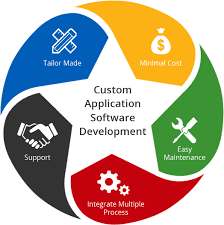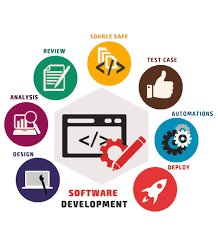Empowering Businesses with Custom Application Development Solutions from a Leading Company
The Power of Custom Application Development
In today’s digital age, businesses are constantly seeking ways to stay ahead of the competition and meet the evolving needs of their customers. One effective strategy that many successful companies are adopting is custom application development.
A custom application development company specializes in creating tailored software solutions that address specific business requirements. These applications are designed from the ground up to align with the unique processes and goals of a particular organization.
Benefits of Custom Applications:
- Enhanced Efficiency: Custom applications streamline workflows, automate repetitive tasks, and improve overall operational efficiency.
- Scalability: As businesses grow, custom applications can easily scale to accommodate increased demands and user loads.
- Competitive Advantage: By having a unique software solution that meets their exact needs, companies can gain a competitive edge in the market.
- Data Security: Custom applications can be built with robust security features to protect sensitive business data from cyber threats.
- Bespoke User Experience: Tailored applications provide a personalized user experience that enhances customer satisfaction and engagement.
Choosing the Right Custom Application Development Company
When selecting a custom application development company, it is essential to consider factors such as expertise, experience, portfolio, and client testimonials. A reputable company will have a proven track record of delivering high-quality custom software solutions that drive business growth and innovation.
By partnering with a trusted custom application development company, businesses can unlock new opportunities for efficiency, growth, and success in today’s competitive marketplace.
5 Essential Tips for Success in Custom Application Development
- Understand the client’s needs and requirements thoroughly before starting any project.
- Maintain clear and constant communication with the client throughout the development process.
- Focus on creating scalable and flexible solutions to accommodate future growth and changes.
- Prioritize testing and quality assurance to deliver a reliable and bug-free application.
- Stay updated with the latest technologies and trends in custom application development to provide innovative solutions.
Understand the client’s needs and requirements thoroughly before starting any project.
To ensure the success of a custom application development project, it is crucial for the development company to thoroughly understand the client’s needs and requirements before initiating any work. By taking the time to comprehensively grasp the client’s objectives, challenges, and desired outcomes, the development team can tailor their approach to create a solution that precisely meets the client’s expectations. Clear communication and collaboration during the initial stages of a project help establish a solid foundation for delivering a custom application that not only addresses specific requirements but also adds significant value to the client’s business operations.
Maintain clear and constant communication with the client throughout the development process.
Maintaining clear and constant communication with the client throughout the custom application development process is crucial for ensuring project success. By keeping the client informed at every stage, addressing any concerns promptly, and seeking feedback regularly, a custom application development company can ensure that the final product aligns with the client’s vision and requirements. Effective communication fosters transparency, builds trust, and allows for timely adjustments to be made, ultimately leading to a successful collaboration and a satisfied client.
Focus on creating scalable and flexible solutions to accommodate future growth and changes.
When partnering with a custom application development company, it is crucial to emphasize the importance of focusing on creating scalable and flexible solutions that can adapt to future growth and changes. By prioritizing scalability and flexibility in the development process, businesses can ensure that their custom applications remain relevant and effective as their needs evolve over time. This approach not only future-proofs the software but also maximizes its longevity and value, ultimately contributing to sustained success and competitiveness in the dynamic business landscape.
Prioritize testing and quality assurance to deliver a reliable and bug-free application.
To ensure the success of a custom application development project, it is crucial to prioritize testing and quality assurance. By conducting thorough testing throughout the development process, developers can identify and address potential issues early on, resulting in a more reliable and bug-free application. Quality assurance measures help maintain the integrity of the software, ensuring that it meets the desired specifications and functions seamlessly for end-users. Prioritizing testing and quality assurance ultimately leads to a higher level of customer satisfaction and confidence in the custom application’s performance.
Stay updated with the latest technologies and trends in custom application development to provide innovative solutions.
To excel as a custom application development company, it is crucial to stay updated with the latest technologies and trends in the field. By keeping abreast of advancements in custom application development, companies can leverage innovative solutions to meet the evolving needs of their clients. Embracing new technologies allows custom application development firms to deliver cutting-edge software products that enhance efficiency, scalability, and user experience. Continuous learning and adaptation to industry trends are key factors in ensuring that custom application development companies remain competitive and provide valuable solutions in today’s dynamic business landscape.




